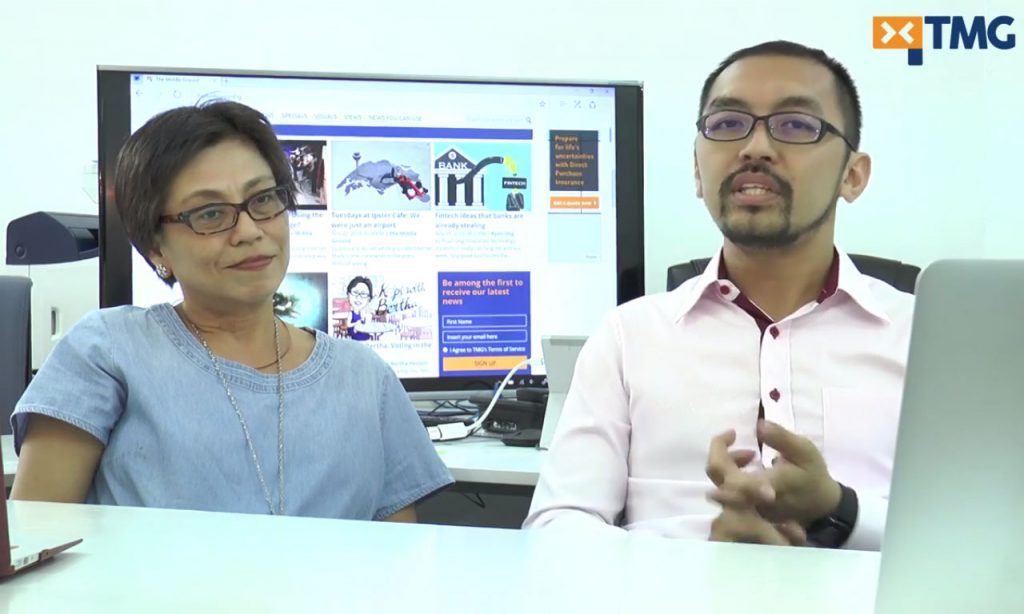Print is dying, and the future lies solely in digital.
The Middle Ground (TMG) just proved that statement false last week.
In reality, no media outlet is safe.
According to co-founder Daniel Yap, the independent news site had been subsisting on monthly contributions of $3,000 from just over 200 patrons. That is a meagre sum given that operating the site had already racked up “tens of thousands” of dollars.
He also said that it failed to attract advertisers because it could not generate “sheer traffic and viral content”.
Yet “viral content” is not a content format. It is content that connects with the audience, content that gets shared.
Viral content is quality content because it is content that is endorsed by the audience.
Like it or not, the audience is king. We decide with our clicks, comments, and occasionally our wallets, what counts for quality. Especially when it comes to the alternative media, expectations tend to rise because we want something different from the typical straight-laced reporting of the Straits Times.

The definition of “quality” also remains subjective. One man’s meat is another man’s poison – in-depth analysis may satiate the intellectual cravings of some, but may put off those to whom a condensed news summary or listicle written in the colloquial appeal.
And, more often than not, it is the simple or superficial that captures the our attention, even when we proclaim ourselves as a cerebral and discerning bunch.
Between a story of crayfish attempting an escape on the Downtown Line and an examination of Singapore’s low fertility rate, which story are Singaporeans more likely to click on?
The former easily garnered more than 800 likes and 200 shares yesterday.
It’s a simplistic example, yes, but it is also representative of our online activity in general. It begs the question: do we want the alternative media sites to push boundaries or would we rather them supply us with the bizarre and funny?
Bryan Choo, founder of The Smart Local, shared at yesterday’s Content Summit 2017 that his platform saw exponential growth only after the team started producing “viral listicles”. It suggests that when it comes to consuming content, we are are generally not too adventurous and prefer quick, bite-sized reads.
Do we want the alternative media sites to push boundaries, or would we rather them supply us with the bizarre and funny?
On one hand, content snobs champion themselves as the bastions of true journalism, and lament that it is the preferences of basic readers that are destroying the industry. Even TMG’s closure statement implies that they pin the blame on readers for not getting their aims and product.
Yet the ugly truth is that content snobbery is the real killer of content creation. Sure, we may not be rational all the time when it comes to consuming content. But then again, no one is. Sometimes, we’re just looking for a media site who will confirm our bias.
No matter how readers choose to consume content, they still dictate the direction of the market. Content producers have to pay heed to that if they hope to bridge the gaps within a fragmented consumer base.
Many readers with so-called “refined tastes” don’t even put their money where their mouth is.
Take a look at New Naratif. The new journalism initiative started by activist Kirsten Han and academic PJ Thum focuses on longform stories and will run on a subscription model costing US$52 (S$70) a year.
It claims it needs 3,500 members to enable them to publish a few stories a week. A month since it launched its crowdfunding initiative, it has only netted 222.
Where are all those who have continually called for readers to refine their tastes and pay for good content? Is a $6 monthly subscription considered too expensive then?
The content snobs may have the loudest voice at times, but they do not necessarily represent the majority of readers here.
At the same time, content producers should not just harp on idealistic values and hope to turn the market around.

Two years later their ideals have led to their downfall.
We could criticise TMG for sticking to their guns and not producing content beyond their “General Paper essay” model. Unlike their competitor Mothership, for instance, they just did not leverage on their digital presence to transform themselves into an attractive platform.
One could even say that TMG’s content was boring, and thus jibes of them being “Straits Times-lite” are not entirely wrong.
But most importantly, TMG did not have a firm grasp of what its audience wanted to read in the first place.
Jennifer Brandel, CEO of journalism consulting company Hearken, presents an interesting argument that journalism companies should listen to their audiences instead of prescribing them content that they assume they want or need.
“It starts with a new mindset that doesn’t require newsrooms to choose between their metrics and their mission. That mindset requires removing the assumption that newsrooms know best, and acknowledging that audiences are experts in their own interests and in their own communities.
This mindset accepts that audiences are equipped to recognize their own information needs and that they are fully capable of asking great questions with tremendous news value. And this mindset positions journalists as the right resource to provide fact-checked, quality answers.”
If the audience prefers short listicles over long-form essays, so be it. There’s no need to deride this preference. Times are different from the age of print media. Readers hold the power now.
Ultimately, you don’t need to go to great lengths to create quality content. Good content is produced with creativity and integrity, not condescension and pretentiousness.






